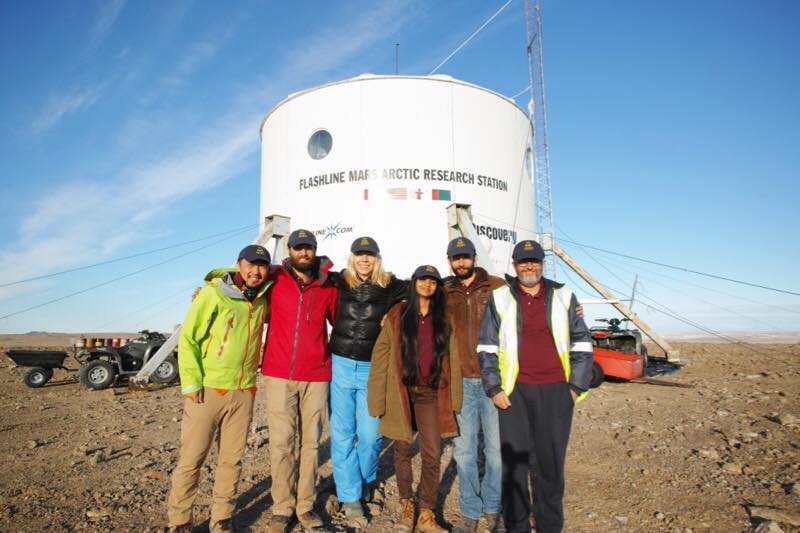2nd Half of 160-Day Mars Mission Simulation Begins in Canadian Arctic

The second half of an ambitious, months-long simulated Mars mission is now underway.
Six crewmembers have arrived at the Flashline Mars Arctic Research Station (FMARS), an outpost in the Canadian Arctic that's run by the nonprofit Mars Society. The milestone marks the beginning of Phase 2 of the Mars 160 mission, which aims to help humanity prepare for real crewed missions to the Red Planet.
Phase 1 of Mars 160 took place last fall, when seven people spent 80 days living and working at the Mars Society's Mars Desert Research Station (MDRS) in Utah. The FMARS phase will also last 80 days —explaining the name of the overall mission. [Inside Mars 160: The Mars Society's Red Planet Simulation in Pictures]
Mars 160's length makes it special. While the Mars Society has mounted numerous missions to MDRS and FMARS, these previous efforts have generally lasted just a few weeks at a time.
The FMARS crew will be led by Frenchman Alexandre Mangeot. The other on-site team members are Japan's Yusuke Murakami; Australian Jonathan Clarke; Russian journalist Anastasiya Stepanova; Anushree Srivastava, who is from India but currently lives in England; and American Paul Knightly. All six are veterans of the MDRS portion of the mission.
Shannon Rupert, who served as principal investigator of the MDRS leg, is reprising that role for the FMARS phase. But this time, she's sharing PI duties with Paul Sokoloff, a senior researcher at the Canadian Museum of Nature, Mars Society representatives said. (Neither Rupert nor Sokoloff will suit up with the six crewmembers.)
During their time at FMARS, which is on Canada's Devon Island, the crewmembers will carry out research in a number of areas, from geology and microbiology to psychology (to investigate how small groups function in an isolated environment, for example). The protocols and programs will be similar to those employed at MDRS, to gauge how different locations affect the data collected, Mars Society representatives said.
Breaking space news, the latest updates on rocket launches, skywatching events and more!
"Mars 160 is a unique mission that combines and compares both desert and Arctic Mars analogs as field test environments for Mars mission operations research," Mars Society president Robert Zubrin said in a statement. "The Mars Society has opened up this vital field of research, which is now expanding worldwide. With this mission by an outstanding crew drawn from four continents, we will advance it substantially. On to Mars."
You can follow the Mars Society's Mars 160 mission here: http://mars160.marssociety.org.
Follow Mike Wall on Twitter @michaeldwall and Google+. Follow us @Spacedotcom, Facebook or Google+. Originally published on Space.com.

Michael Wall is a Senior Space Writer with Space.com and joined the team in 2010. He primarily covers exoplanets, spaceflight and military space, but has been known to dabble in the space art beat. His book about the search for alien life, "Out There," was published on Nov. 13, 2018. Before becoming a science writer, Michael worked as a herpetologist and wildlife biologist. He has a Ph.D. in evolutionary biology from the University of Sydney, Australia, a bachelor's degree from the University of Arizona, and a graduate certificate in science writing from the University of California, Santa Cruz. To find out what his latest project is, you can follow Michael on Twitter.
